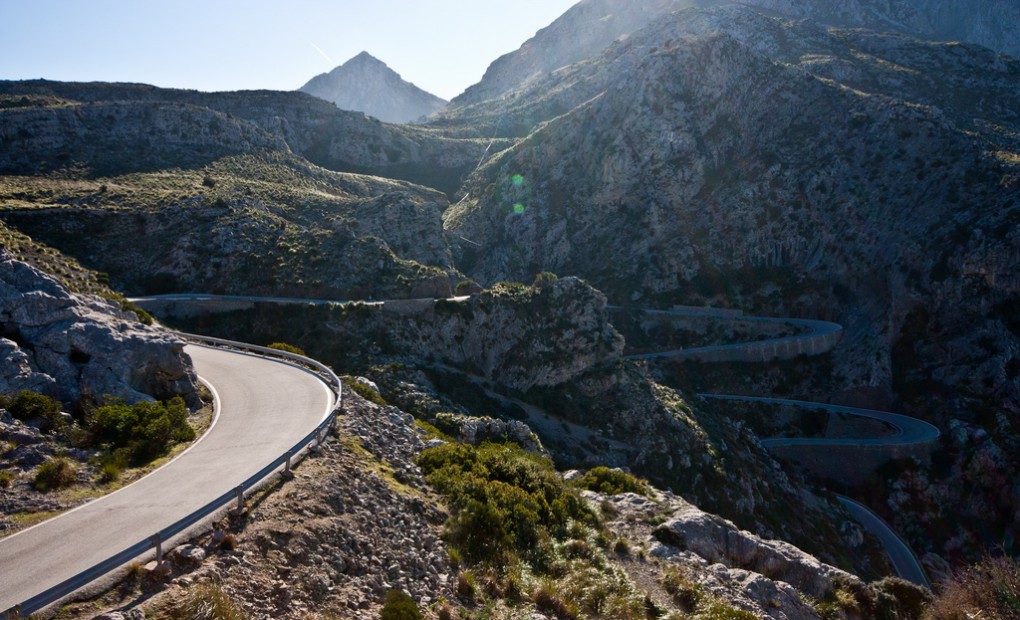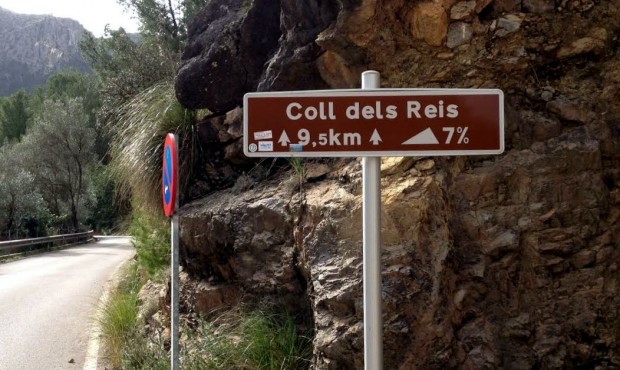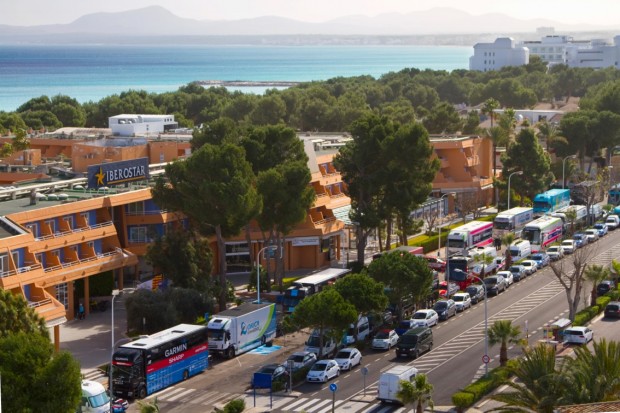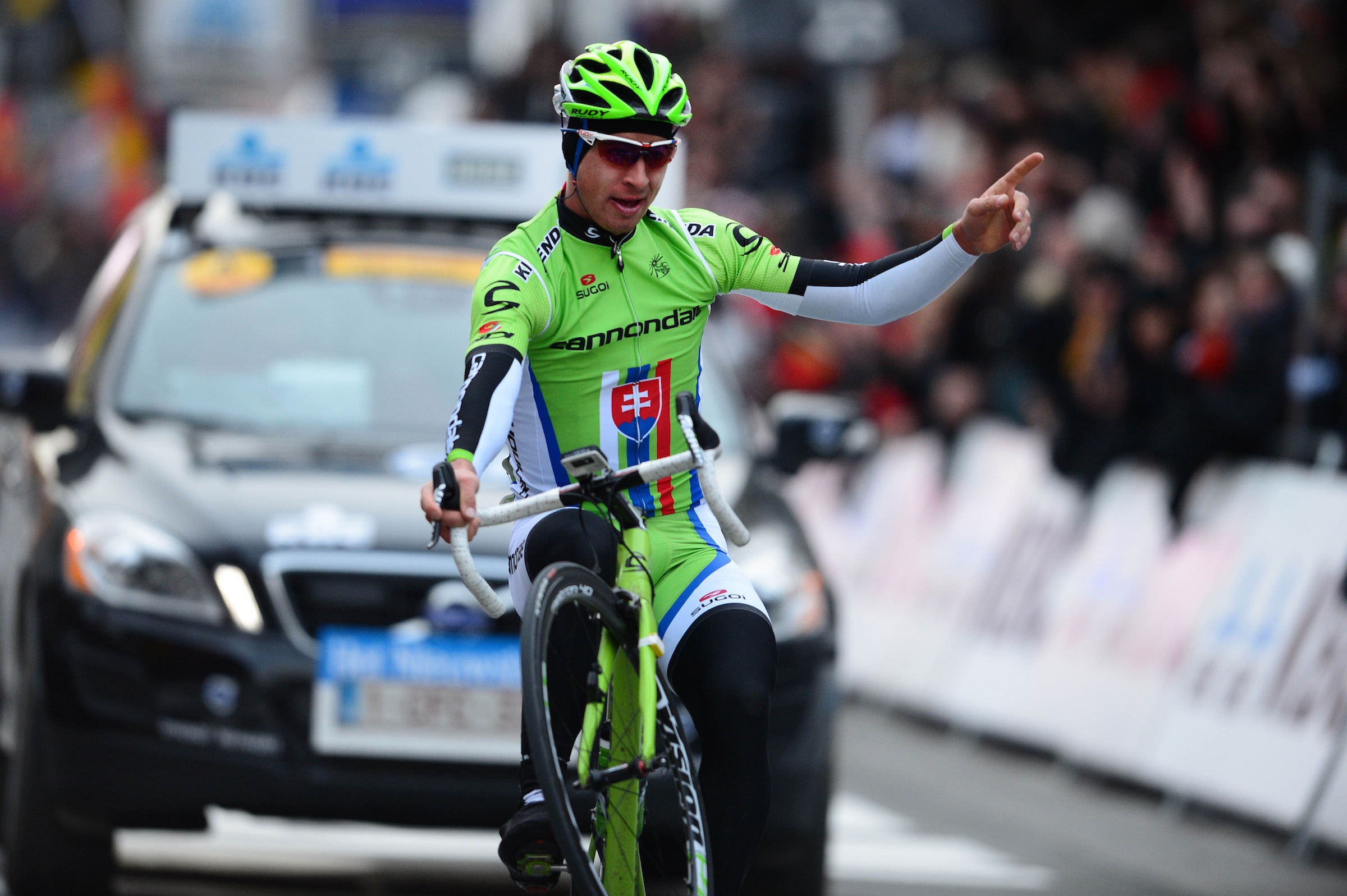Sa Calobra in Majorca is unlike any road I’ve ridden.
The climb’s official name is the Col de Cal Reis but it is widely known as Sa Calobra – or the Cobra – and has become Majorca’s most fabled ascent, rising for just over 2,000 feet over the course of six miles. The road is draped on the mountainside like a coiled snake in a series of steep hairpins layered as if a plate of spaghetti has been dropped in this small corner of the Sierra de Tramuntana mountains. It’s a marvel of engineering which makes it unique among the climbs I’ve encountered.

You don’t stumble upon Sa Calobra. It is essentially an out and back climb – or, more accurately, a down and up climb – as first you must climb to the opposite side of its 683m summit via one of three routes through Majorca’s mountains – no mean feat in itself – before descending to the Port de sa Calobra on a road which is effectively a dead end. There is little reason for the slither of tarmac to exist as the tiny cove at its base shows little sign of life other than two restaurants to service the hoardes of coach tourists drawn to Majorca in spring and summer. Once you’ve made the descent the only way is up…
Sa Calobra is on the hit list of any cyclist who visits the island. It is Team Sky’s unofficial pre-season testing ground and has long been considered the toughest climb in Majorca for the thousands of amateur cyclists who arrive in search of sun each spring. I have ridden in Majorca once before, in April 2012, but didn’t tackle its most famous climb so, back on the island to cover the Iberostar Challenge Majorca – a series of four, one-day races where Bradley Wiggins started his season – it is impossible to pass up the opportunity for a ride of my own.
My ride takes me from Port de Pollença, and, after only a handful of flat miles, turns uphill on a route which sees me either climbing or descending. The opening ascent, the Coll de Femenia, rises at a steady gradient which serves to loosen the legs and open the lungs. I keep my pace and heart rate in check knowing that Sa Calobra is to come but the morning sun is warm and I soon remove my gilet. There is little better feeling than riding in bib shorts, a short sleeve jersey, and arm and knee warmers with the sun on your back after after a long, wet winter.
Majorca is a playground to the pros, who lay the foundations for the year ahead on the island in winter. A number of teams head to the Mediterranean for pre-season training camps and riders from Omega Pharma-QuickStep, MTN-Qhubeka, Astana and Madison-Genesis descend on the opposite side of the road as I climb.
Majorca’s tarmac is not uniformly smooth and the surface of the road which rolls from the summit of the Coll de Femenia to the start of the descent of Sa Calobra varies from billiard table smooth to distinctly ‘grippy’ and the undulating road makes for slow progress in a nagging headwind.
Having then climbed the short col to reach the summit of Sa Calobra, the descent begins and a 360 degree hairpin flyover sets the tone. From there the mountain drops away beneath you and a series of hairpins, stacked one on top of another, unravel but there’s little time to enjoy the view. It’s a white-knuckle descent – part thrilling, part terrifying – and a sensory assault, the wind rushing through the vents in my helmet as I plunge towards the sea. Each hairpin is a test of nerve and requires heavy braking, before a short sprint to get back up to speed, only to repeat the process.

The road uncoils through the super-fast mid-section of the descent before a sharp right-hand corner and the final twisting, turning few kilometres before the Port de sa Calobra emerges. There it’s time to fill my water bottles and grab a Mars bar at the restaurant before turning back uphill.
A sign marks the bottom of the ascent and the challenge to come: 9.5km at seven per cent. It’s not a particularly long nor especially steep climb by Alpine or Pyrenean standards but Sa Calobra remains a significant test, not least for UK cyclists, and, by virtue of its location, is likely to be part of a big day in the Majorcan mountains which will doubtless like you with sore legs like it did me. Sa Calobra itself is a 30 to 60-minute climb, depending on you level of fitness, so provides a good opportunity to ride at a hard pace throughout.
The climb provides plenty of opportunity to take in the vistas through a haze of sweat and heavy breathing, and while the road can become busy with cyclists and tourist traffic at the height of the season, it is quiet on both the descent and subsequent climb during my visit and I settle into a rhythm within the solitude. The gradient remains steady for the most part – between six and seven per cent – and allows me to climb at a reasonably high cadence but the nature of the road, and its twists and turns, means that there is a headwind seemingly lurking around every corner.
The most difficult section of the climb is saved until the second half when, with a significant amount of the vertical ascent still to scale, the mountainside rises steeply and the tarmac must rise with it in those hairpins which just an hour earlier provided such a thrilling descent. While never too steep, it pays to keep your powder dry on the first half of the climb to leave something in the tank for the hairpins. I rise on the pedals on each bend, taking the outside line in a bid to soften the gradient, then return to the saddle and settle back into a pace which by now sees me scanning the slopes above me for a sign of the summit emerging.
And eventually it does, as the road reverses through that first 360 degree hairpin and onto the final 500m to the summit. It’s a welcome sight as, while Sa Calobra isn’t as difficult on paper as some of the better known ascents in Europe, the difficulty, like most climbs, comes in the pace at which its ridden. That pace, for most cyclists, means riding it as fast as you can without collapsing in a heap before reaching the top.
And so, with legs and lungs already burning, any climb must finish with a burst to the line and I sprint over the col and begin the short descent which marks the halfway point of my out-and-back route from Port de Pollença. I retrace my steps on what proves to be a valuable winter training ride with 6,500 feet of climbing over the course of 60 miles.
But I did not travel to the Mediterranean just to ride Sa Calobra. One of the great draws of professional cycling is its accessibility – the open road is the sport’s arena – but few races give fans – and journalists – the access of Challenge Majorca.
The race is, in fact, a series of one-day contests. Unlike a stage race, where a team must select its line-up for the entirety of the event, Challenge Majorca allows a team to rotate through a squad of riders. Many WorldTour teams – including Team Sky, Omega Pharma-QuickStep and Movistar – are already in Majorca ahead of the race for their early-season training camps and the race serves as a useful end-of-camp bookmark which gives riders the chance to stretch the legs and directeur sportifs the opportunity to assess form. The racing is varied, with a criterium in the capital, Palma, followed by an undulating day in the east of the island and two days in the mountains.

The race is sponsored by Iberostar, the Spanish hotel chain, and, as a result, all the teams stay at the same hotel in the north of the island. The race is almost unique in that regard, with only the Tour Down Under and Tours of Dubai, Qatar and Oman operating a similar setup. Most races see teams and riders spread over a number of hotels.
There are not the crowds and stress of more prestigious races, and riders and fans, many of whom are also staying at the hotel, mingle freely in the reception area and at the start of each day’s racing, where the atmosphere is relaxed and a number of British fans, many of whom return year after year, roam around the team buses.
The road outside the hotel is lined with mechanics trucks and fans coo over the bikes of the world’s best cyclists. It gives me the chance to report back on the latest equipment being used by the world’s best cyclists in 2014.
If the hotel is well equipped for professional riders, it is also an increasingly popular base for amateur cyclists through the first half of the year, with secure storage for more than 2,000 bikes, a hire fleet of its own and a spa to rest tired legs.
While the racing calendar dictates that professional cyclists embark on their training camps in January and February, WorldTour pros will be replaced by amateurs as winter turns to spring and warm weather and sunshine comes with a greater guarantee. Majorca is a mecca for sportive riders and amateur racers through March, April and May – and for good reason.
The hotel will also host the 2014 edition of the Mallorca 312 sportive on Saturday April 26 and nearly 2,000 cyclists, including five-time Tour de France winner Miguel Induráin, will set off for a 312km lap of the island. To get myself on the start line will need many miles between now and then but, having once again sampled the pleasure of riding in Majorca, it’s tempting. There’s always the 167km ‘short course’…
Website: Iberostar Playa de Muro / Mallorca 312
RoadCyclingUK attended Challenge Majorca with race sponsor Iberostar, staying at the Iberostar Playa de Muro hotel in Alcudia. For more information visit www.iberostar.com





